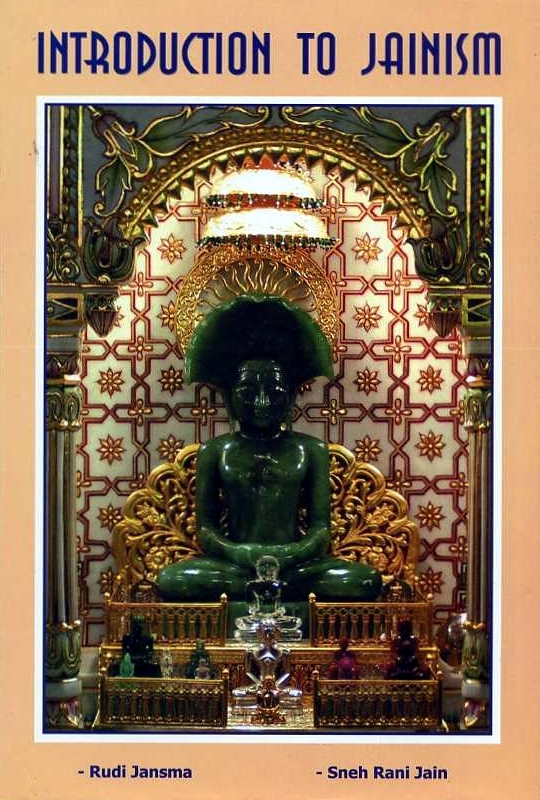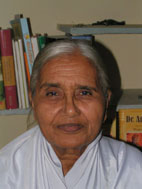
The Jains are a small group of people who have hardly spread outside the borders of India. Outside India, few have even heard of them, even in circles of western intellectuals and "New Age" people. Even in the English language very little can be found about them, and then mostly in the form of publications which do not appeal to the general public.[1] The purpose of this book is to make this beautiful religion and philosophy more widely known.
During my research into Jainism, and later, when writing this book, I have been greatly supported by Jains from all levels of society, among them leaders of organizations, educationalists, monks, nuns and lay people. My first encounter with Jainism was when I saw a television documentary by Prof. P.S. Jaini of the University of California in Berkeley, which inspired me to meet Prof. Jaini in person. Other early sources of inspiration were articles in Sunrise, the magazine of the Theosophical Society in Pasadena (California). In the initial phases I was especially inspired by Prof. M.D. Vasantharaj of Madras University, who granted me many interviews which were all recorded on audiotape and many others to whom I have been able to speak in and around Madras (now Chennai). In the North of India I owe much to the (Śvetambara) Jain philosopher Dr. Sohan Lal Gandhi. We have known each other for quite a few years, but since I took up residence in Jaipur, Rajasthan, where he also lives, he has supported me philosophically as well as practically. And I owe very much to Dr. Sneh Rani Jain from Sagar, Madhya Pradesh, a (Digambara) Jain Brahmāchārinī ("aspirant nun"), whom I did not meet until I had already begun writing this book. She took me on a pilgrimage-cum-archeological research trip to a series of sacred places in Central and South India. I owe it to her, and therefore indirectly to her guru Śri Vidhyasagarji Maharaja, that I was able to go beyond the field of theory and become intensively acquainted with the life of Jain spiritual people in practice. Thanks to her and her friends I have been able to visit and take photographs in locations to which outsiders are not normally admitted. I mostly have her, and the monks with whom she brought me into contact, to thank for the information, including photos, in this book which can not be found in any existing literature. This applies especially to subjects concerning archeology, art, yoga, and meditation. On these subjects she wrote chapters 7 and 10 for this book. I also wish to thank all those who have read and commented on my English translation of the text originally written in Dutch, notably Dr. S.L. Gandhi, Dr. S.R. Jain, Dr. Kusum Jain of Rajasthan University, Mr. Surendra Bothraof the Prakrit Bharati Academy, and Mr. D.R. Mehta. Founder and Chief Patron of the same institution. Mr. Bothra kindly provided the section "Jainism and environment" in chapter 3 (Ahimsa). And last but not least I thank David Pratt for reading and correcting my English. I am indebted to Mr. Mehta for the publication of this book in English.
The helpfulness and hospitality I received from the Indians were like an inexhaustible ocean.
- Rudi Jansma, Jaipur. 21 March 2006
Very worth reading is, for example: P.S. Jaini, The Jaina Path of Purification, University of California Press, Berkeley, 1979; A thorough and very clear study of Jainism is by Helmuth von Glasenapp: Jainism. an Indian Religion of Salvation, Motilal Banarsidass Publishers Pvt. Ltd. Delhi 1999 (German original 1925); That Which Is Tattvārtha Sūtra; Classical Jain Manual for Understanding the True Nature of Reality, of Umāsvāti (Tatia. Nathmal, transl.) Harper Collins Publishers. London etc.. 1994; Another translation of the Tattvārthadhigama Sūtra, or its Digambara counterpart, the Sarvārthasiddhi, has been published in India by Pūjyāpada Devanandi. Bharatiya Jnanapitha. Delhi, 1989 (4lh ed.) For all Jains this is one of the most important texts (sometimes referred to as "the Jain Bible) in which the cosmological. biological and karmic doctrines are given in all their detail. See lists of English literature on the internet, e.g. http://www.jainworld.com/jainbooks/jainbooks.htm
 Dr. Sneh Rani Jain
Dr. Sneh Rani Jain